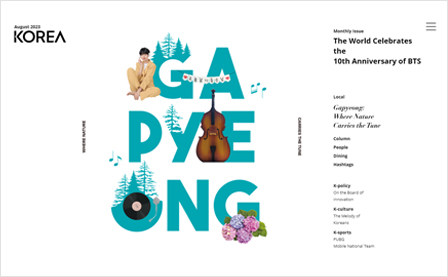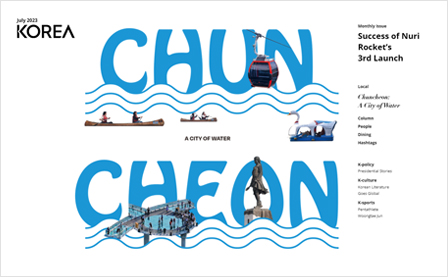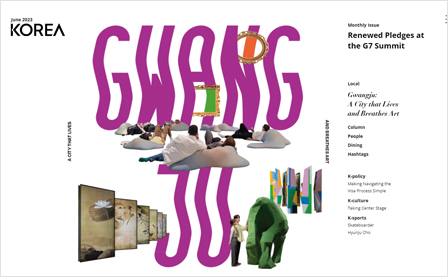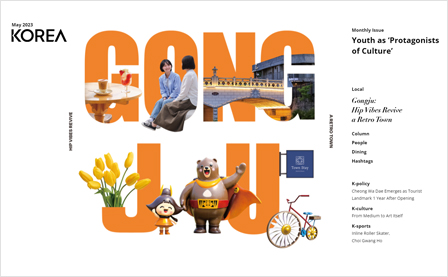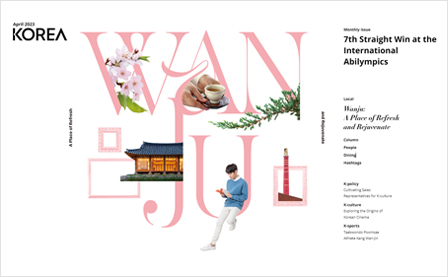September 2023

ESG Report
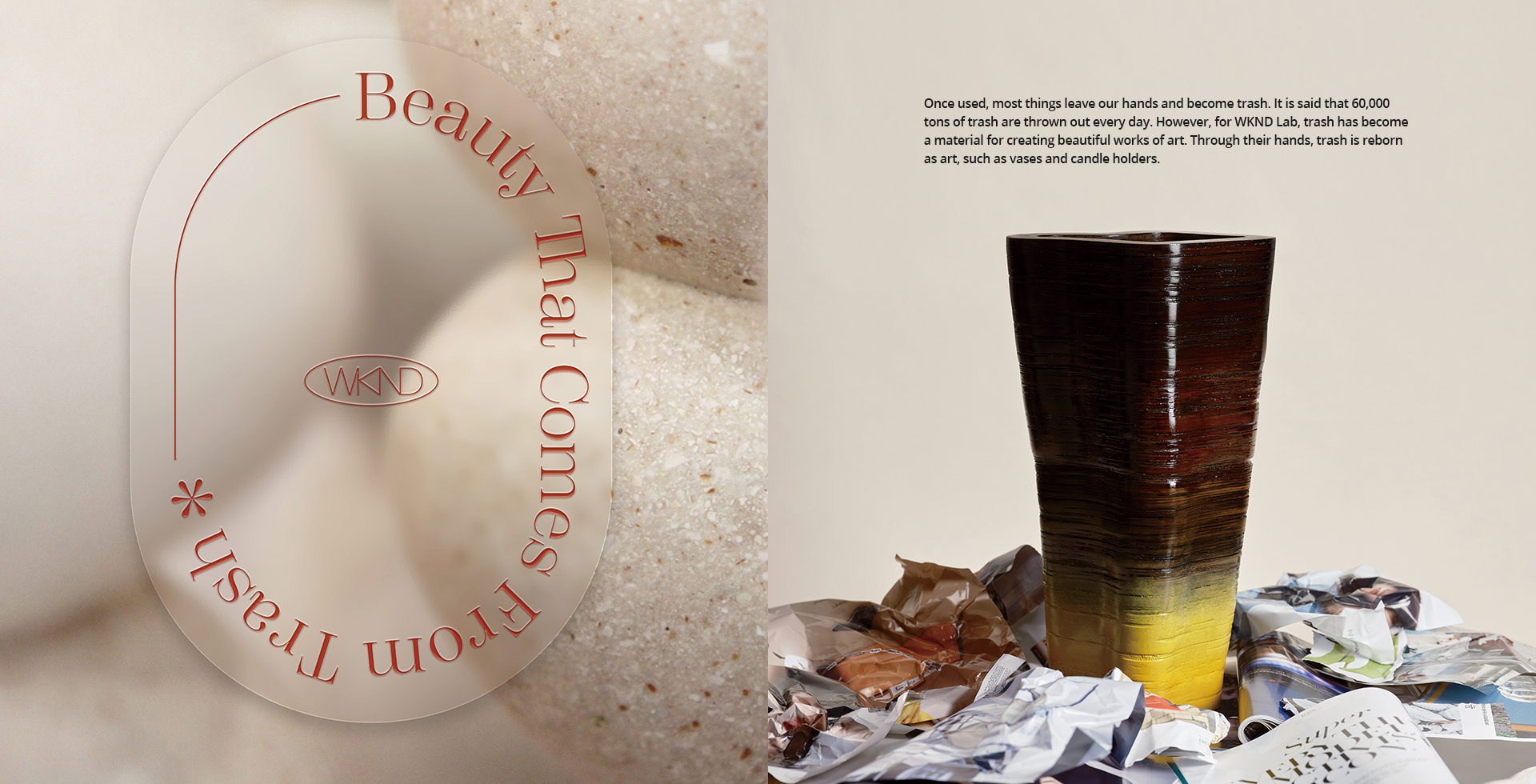
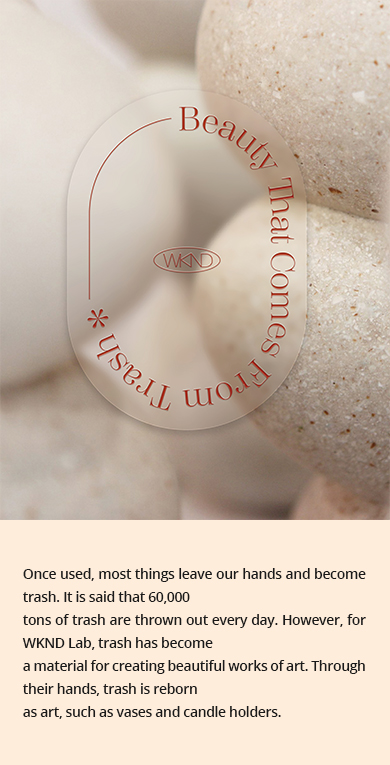
Photos Courtesy of WKND Lab
Trash Becomes Material
WKND Lab was created by CEOs Halin Lee, Eunji Jeon who met in the department of design when they were university students. The two studied abroad in Switzerland and Germany, respectively. Their time as exchange students made them become more aware of the scale of trash thrown away every day. “I had to do everything myself, from eating to taking out the trash. That was when I realized the considerable amount of waste that came from food and household items. It naturally led to my interest in the environment,” Lee said.
The two students shared the same goals: wanting to work for themselves and taking care of the environment. They decided to come together on a project once they returned to Korea, and WKND Lab was born. “The issue of marine debris was on the rise when we were discussing the direction of the project. The biggest problem with plastic is that it doesn’t break down. So, we thought, ‘What if we could replace plastic with a material that does.’ That was when we started studying bioplastics.”
Bioplastics are a type of plastic material that is made from renewable raw materials such as crab and shrimp shells and plants. The lifespan of bioplastics varies depending on the type, but on average, it takes six months for bioplastics to decompose in nature. That’s a relatively quick time when compared to the 500 years it takes for plastic to decompose. WKND Lab decided to focus on biodegradation, which led to the idea of using food waste.
 The Ricotta series. Ricotta series is made from extracted casein protein from milk waste.
The Ricotta series. Ricotta series is made from extracted casein protein from milk waste.Art for the Earth
Each work starts with material development since the basic material used is trash.
“The process starts with understanding the material. We think about the physical and chemical properties as well as historical and conceptual ideas. We conduct basic research by studying different papers, articles and books. Once we’re finished with that, we begin processing the material. Each material has a different process such as component extraction, separation, drying, grinding, dyeing and compression. The process is similar to cooking a dish,” Jeon said.
Product planning begins after the materials have been developed from everyday waste. Things that are no longer used are repurposed as various items such as tea tables, trays, office supplies, household items, accessories and lighting.
The steady research and concerns about the material have completely widened the horizon when it comes to items that can be reused. Materials now include egg shells, oyster shells, Hanji (traditional paper), paper, duck egg yolks and wheat bran. “In the past, murals were painted by mixing pigments with duck egg yolks before oil paint was invented. This inspired me to create our ‘Tempera’ candle holder and tray from duck egg yolks. We use egg shells and oyster shells for our ‘Oygg’ vases. I think the design is quite intuitive as it reminds me of eggs,” Lee said.
The products created by WKND Lab are so beautiful that it’s hard to believe they were once trash. The company has been working on various collaborations with magazines and other companies. WKND Lab has appeared in a fashion magazine pictorial and collaborated with various companies for exhibitions. “The orientation of our products is ‘sustainability.’ Many of our products are exhibited based on this. One of our most recent works, Paper Stratum, was a collaboration project with the cosmetics company L’Occitane and the magazine Harper’s BAZAAR. We created a work of art using discarded shopping bags and back issues of magazines. We stacked layers of paper on top of each other to create a vase and applied lacquer to preserve the paper. It was a very meaningful piece because it was created with waste that came from the industry.”
 (Left) Tray of Oygg series. Oygg series is made using eggshells discarded from an ice cream shop and shells from Tongyeong, Korea.
(Left) Tray of Oygg series. Oygg series is made using eggshells discarded from an ice cream shop and shells from Tongyeong, Korea.(Right) The artwork ‘Complexion’ utilizes cosmetic waste generated in the manufacturing process of the brand Freshian.
A Designer’s View of the Environment
A good designer for WKND Lab is a person who is able to propose a situation after a product has been cast aside. That’s why the company continues to question the world and plans on expanding their art-related activities to achieve a more sustainable tomorrow.
“People often find the word ‘sustainable’ to be rather difficult to follow when working on a project. We are not scientists, we are designers. As a designer, I want to tell a lot of stories through my work. I recently became interested in a building material called glass wool. I’ve heard that a lot of trash is generated when buildings are dismantled. Rather than being recycled, most of the discarded items end up in landfills or incinerated like other trash. WKND Lab wants to carry out a project to recycle glass wool and turn it into glass tiles. I hope this will help people see that sustainability is not that difficult,” Jeon said.
WKND Lab reinterprets seemingly inaccessible environmental issues through design. We hope that their desires to save the environment will resonate and be conveyed to many people.
 View of all
View of all